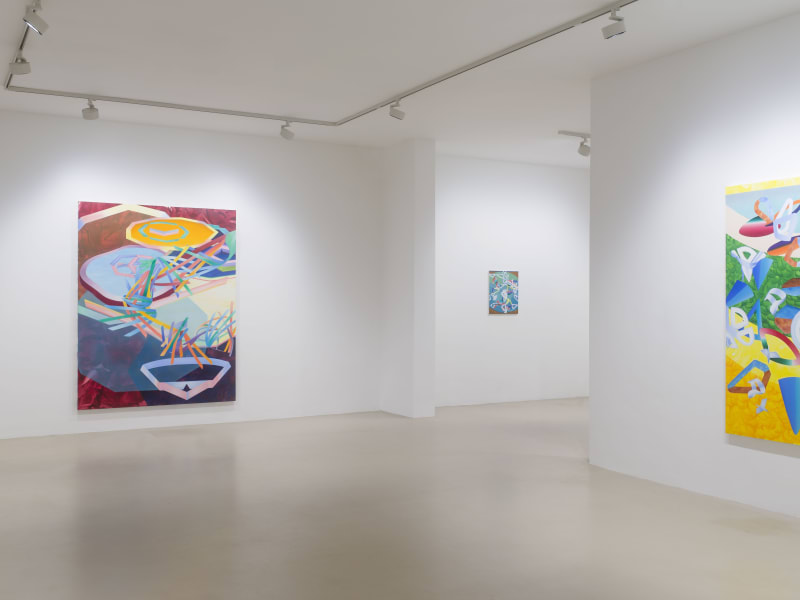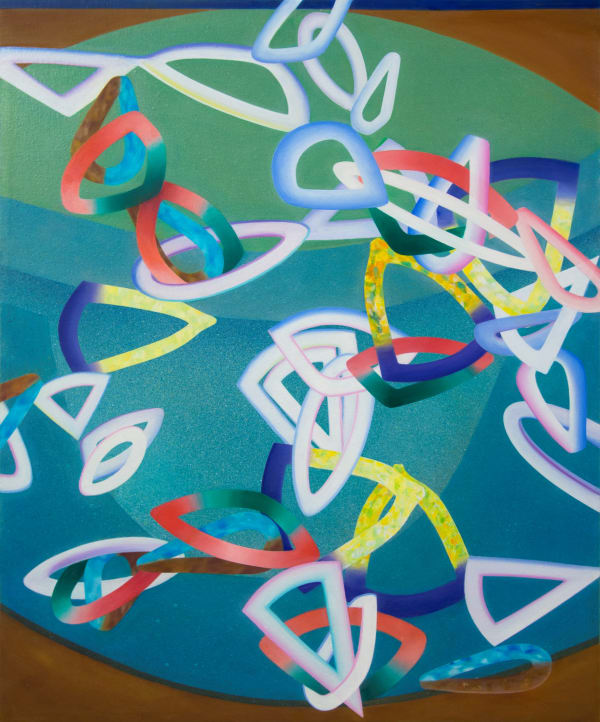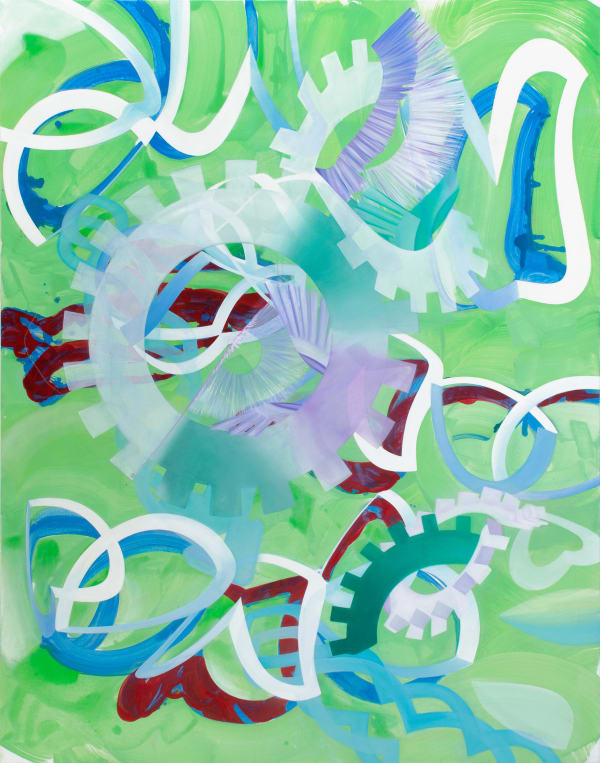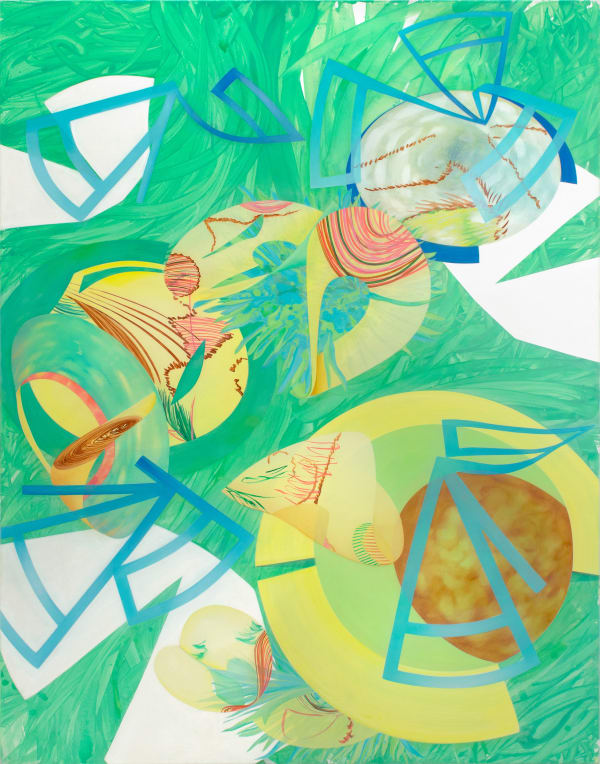rebekka löffler: schwebezustand
Past exhibition
Overview
KETELEER GALLERY is proud to present Schwebezustand, the first solo exhibition by German painter Rebekka Löffler (°1985. Freiburg im Breisgau, DE) with the gallery. The exhibition consists of an entirely new series of paintings and drawings.
Press release
Inner space.
On the work of Rebekka Löffler.
A text by Martin Germann.
On the work of Rebekka Löffler.
A text by Martin Germann.
It remains unsolved; the question concerning the meaning of painting and its productive potentials. Parallel to the rise of Modernism, since the mid-19th century – after photography took over its supposed function of visually archiving and representing history – painting was declared dead as often as it was able to recover and resurrect. This cultural score, this hovering fugue between frugal aliveness and zombie-like agony seems infinite and forces each time anew the question upon us of what painting can contribute to the present. It is worth asking, particularly in the here and now, what it can contribute to a world so full and saturated with images of all kind. Almost like a lesson on objectivity, the work of German artists Rebekka Löffler becomes a relevant consideration to this matter – an artist who has opted for enfolding her oeuvre by using strictly paint, brush and canvas, and to embrace all of the medium’s qualities in a strikingly personal manner.
Before embedding Rebekka Löffler’s practice in any kind of discourse, it is worth reconsidering what kind of here and now we’re speaking of in respect to the uses and economies of images. Voluptuous metaphors such as “flood of images” suggest that the acceleration of pictures we’re confronted with on a daily basis are literally as inevitable as the currents of the ocean and, furthermore, that these streams and waves are an integral part of nature as such. It is intriguing to look at Rebekka Löffler’s paintings within this framework, as they seem – at first glance – to adapt easily within those seamless flows; their colour scale, lightness and soft complexity nestling easily with our senses. They essentially remain ungraspable, harbouring a certain opacity: as a sort of camouflage, the enormous elegance and craftmanship draw the viewer in but they subsequently expose elements which might have been lost in today’s outward-facing world; the philosophically driven idea of a secret inner space of constant movement, fluidity and dialectic negotiation which, under this premise, would rather be a space of resistance than the easy glide of perception which is initially suggested.
The production of each new painting is based on a careful and time-consuming creative process. They are the result of a constant dialogue between thought and manifestations, gesture and control, colour and shape, shout and echo. Before Rebekka Löffler starts with a work, drawings and colour tests formulate the material base as underlying associations or thoughts to depart from, thoughts which are usually connected to the most basic human needs: her works speak about emotions, about belonging, about deciding, but also about relating or – put differently – about relations and mutual interdependencies. To Rebekka Löffler, painting serves as a generous playground for a process of reflecting experiences, events and thoughts; modes of being in the world which are shared through the epidermis of the painting and its more subcutaneous areas each time anew.
The works emit a welcoming, fresh aura. But as one delves deeper into each painterly space, confusion and disorientation emerge unexpectedly – a seemingly dominating unruliness comes forward, and we get lost ourselves in the suggested order. What looks familiar at first, a well-known and canonized abstract or concrete rhetoric, mutates into new territories. A feeling of the unseen – of touch – arises, masterfully exercised within all classical parameters of painting. With every gesture the tensions between line and plane, figure and ground, light and shadow, reading and writing are constantly negotiated. A work such as “Zwiegespräch (Synthese) / Inner Monologue (Synthesis)”, 2020 reminds me of a constant inner dialogue, executed in a sort of private vocabulary or a meta-language to escape in. This escape path however flows over into another painting like “Sender und Empfänger / Sender and Receiver”, 2020 in which the letter-like forms mutate into something new again and we see how the oeuvre produced itself step by step, as a sensual and careful dialogue of the artist with her own output. The slowness of each work’s production speaks of a certain equanimity towards a world of acceleration, and how Rebekka managed to establish her own pace within it.
Löffler’s work repeatedly addresses the eternal junction between seeing, feeling and reflecting, and this is the right approach, since it is the exact place where the notions of image and language collapse into each other. But we should also consider when this takes place, namely now, in the 21st century, when the differences between a grounded and an ungrounded world – a world remaining connected to nature, and a representational ground zero, in which all figuration is elevated to a new utopia, sharply contrasting with Mondrian’s and Malevich’s ideas of highly reduced abstraction– are widely expanded, and branch out into many directions. It comes as no surprise that Rebekka Löffler was influenced by a wide range of artists, including Charline von Heyl, Laura Owens, Amy Sillman, Pipilotti Rist, – female artists of a particular kind; women who were able to develop a language of their own within a field which still remains dominated by the male gaze and judgment. The visual world we’re in now, steadily hovering between being online and offline, here and there, has been transformed into a larger visual complexity of in-betweens, a permanent flux, a stability of the instable, leading us back to life itself with its own feedback loops of permanent destruction and recuperation. These processes, wherein the form of each new painting is developed and reinterpreted on the basis of drawings, are almost prototypical for every single one of Rebekka’s works and their slow and steady genesis.
The expanded history of painting formulates a pre-existing archive which Rebekka Löffler can obviously easily draw from to formulate and accentuate the processes she wants to visualize. She transforms all academist attributions however – as mentioned above – into something personal and entirely her own. In this respect we could understand Rebekka’s paintings as being highly individualistic. They are, however, produced with the motivation to represent the endless complexity of encounters. Instead of referring to systems such as “series”, we should rather consider her works as being like a family of individuals; each rich, dense and distinctive. The intrinsic relation between all paintings is quintessentially the artist herself and her life. There is wisdom in Rebekka Lôffler’s work, as there seems to be an awareness of that simple certainty that the lightness and the speed of every single thought takes place in a body, grounded in the world.
Installation Views
Works

















